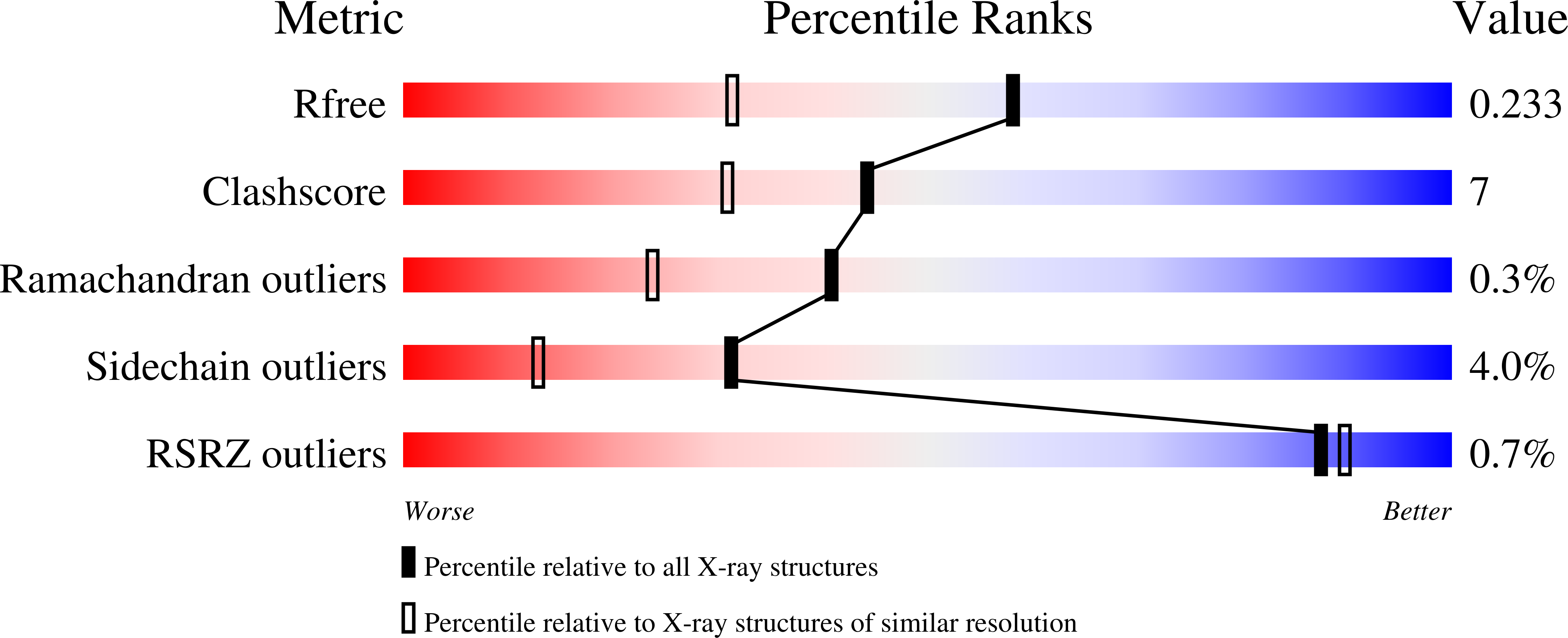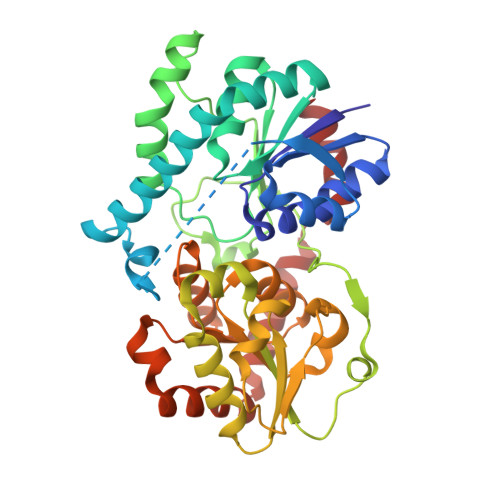Structural Studies of the Spinosyn Rhamnosyltransferase, SpnG.
Isiorho, E.A., Liu, H.W., Keatinge-Clay, A.T.(2012) Biochemistry 51: 1213-1222
- PubMed: 22283226
- DOI: https://doi.org/10.1021/bi201860q
- Primary Citation of Related Structures:
3TSA, 3UYK, 3UYL - PubMed Abstract:
Spinosyns A and D (spinosad), like many other complex polyketides, are tailored near the end of their biosyntheses through the addition of sugars. SpnG, which catalyzes their 9-OH rhamnosylation, is also capable of adding other monosaccharides to the spinosyn aglycone (AGL) from TDP-sugars; however, the substitution of UDP-D-glucose for TDP-D-glucose as the donor substrate is known to result in a >60000-fold reduction in k(cat). Here, we report the structure of SpnG at 1.65 Å resolution, SpnG bound to TDP at 1.86 Å resolution, and SpnG bound to AGL at 1.70 Å resolution. The SpnG-TDP complex reveals how SpnG employs N202 to discriminate between TDP- and UDP-sugars. A conformational change of several residues in the active site is promoted by the binding of TDP. The SpnG-AGL complex shows that the binding of AGL is mediated via hydrophobic interactions and that H13, the potential catalytic base, is within 3 Å of the nucleophilic 9-OH group of AGL. A model for the Michaelis complex was constructed to reveal the features that allow SpnG to transfer diverse sugars; it also revealed that the rhamnosyl moiety is in a skew-boat conformation during the transfer reaction.
Organizational Affiliation:
Division of Medicinal Chemistry, College of Pharmacy, The University of Texas at Austin, Austin, Texas 78712, United States.

















